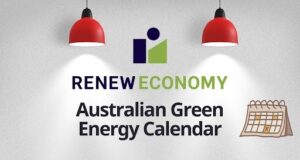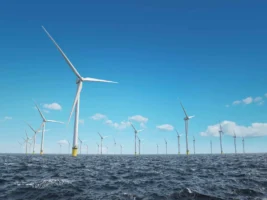The board of the Australian Renewable Energy Agency is believed to have proposed a compromise on its funding position, in an effort to continue its support of critical research and early stage development in new renewable energy and storage technologies.
The Coalition government is seeking to strip $1 billion in funds from ARENA, which was created by the Labor government in 2012, but the conservatives need the support of parliament, and Labor in particular, to pass legislation to do that.

ARENA currently has $1.3 billion in legislated funding in future years and would be left with just $300 million or so after the current $100 million funding round for large-scale solar, the results of which will be announced tomorrow.
The funding move has been included as part of the Turnbull government’s budget repair “omnibus package” that has attempted to wedge Labor by including initiatives that the opposition supported during the recent election campaign.
Labor has found itself in a tricky position on ARENA, having abandoned support of the agency in a fit of pique over the nature of NGO press releases that responded to Malcolm Turnbull’s announcement of a new clean energy innovation fund, which was really nothing more than a trick.
Labor has since tried to row back, but unless it refuses the whole package then ARENA appears doomed.
Current and former board members are apparently lobbying the Coalition government to abandon the proposed cuts, but in an attempt at compromise are suggesting that the scale of the funding cuts could be reduced.
They have outlined several scenarios where the cuts are reduced to $300 million or $500 million, and what that would mean for new projects, investments and jobs (remember the jobs and growth mantra).
It has also been suggested that ARENA funding could come from the so-called “penalty” prices that will be paid if large energy retailers fail to meet their obligations under the renewable energy target.
Currently, there is no penalty imposed on retailers if they fail to build or contract enough renewable energy to meet their obligations. The “penalty price” is paid by the consumer, and the money passed through to government coffers.
Some in the industry have suggested that these funds could be used to support institutions such as ARENA, although it could also mean that such funding becomes dependent on the RET targets being missed. It is not known if this has been discussed between ARENA and the government.
There has been a furious campaign to save ARENA, both from state governments, the renewable energy industry, NGOs, and researchers, who warn that Australia will face an exodus of R&D capabilities and new technologies if the cuts go ahead.
NGOs say they fear that 5,000 jobs could be lost in the large-scale solar industry. In reality, that is not likely, at least not in solar PV.
The funding for the $100 million large-scale solar round is still going ahead, and will support 12 out of the 20 projects shortlisted. Many other solar PV projects will be built because of the strength of the “merchant” market and the falling cost of solar modules.
What will be impacted by the savage ARENA cuts will be funding to the next generation of technologies, such as large-scale solar towers and storage, which attracted a response from the South Australian Labor government this week.
Storage technologies are seen as critical to supporting increased use of wind and solar in the grid, particularly with the cost of gas rising and the market controlled by just a few dominant players who have been allowed to exploit their market power and push prices higher.
ARENA funding has also been critical to development of battery storage technologies and discovering their use and value in the electricity network, either in homes and in peer-to-peer trading, or at grid level. It is also supporting many off-grid and edge-of-grid projects to use renewables and storage to slash the cost of diesel.
And, of course, there are hundreds of researchers whose jobs are at risk. It is believed the ARENA submission has made it clear to the government exactly what is at risk under the various funding cut scenarios.










